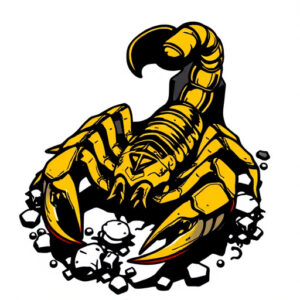Understanding scorpion behavior is key to effective scorpion control. Preventive measures like sealing entry points and maintaining a dry home are crucial. Use non-toxic methods for removal, such as tweezers or specialized vacuums, and capture scorpions humanely using containers. After removal, seal gaps, improve drainage, trim vegetation, and conduct regular inspections to disrupt scorpion trails and prevent future invasions.
Tired of finding scorpions on your property? Understanding their behavior is key to safe removal. This comprehensive guide covers everything from identifying the right tools and equipment to a step-by-step process for capturing scorpions humanely. We also offer post-removal strategies to prevent future invasions, focusing on effective yet humane scorpion control methods.
- Understanding Scorpion Behavior: Key to Safe Removal
- Identifying Safe Removal Tools and Equipment
- Step-by-Step Guide: Humanely Capturing Scorpions
- Preventing Future Scorpion Invasions: Post-Removal Strategies
Understanding Scorpion Behavior: Key to Safe Removal

Understanding scorpion behavior is key to safe removal and effective scorpion control. Scorpions are primarily nocturnal creatures, seeking shelter during the day in cracks, crevices, and dark corners. They are attracted to warm temperatures and moisture, often preferring outdoor areas with minimal human activity. Knowing this behavior allows property owners to take proactive steps in preventing scorpions from entering their homes. Regularly inspecting and sealing entry points such as gaps around doors, windows, and utility pipes can deter scorpions from seeking refuge indoors.
Additionally, maintaining a clean and dry environment, especially in areas prone to moisture buildup, is essential. Scorpions are drawn to water sources, so addressing potential breeding grounds like clogged gutters or leaky pipes is crucial for scorpion control. By understanding and adapting to these behaviors, individuals can effectively manage scorpion populations while ensuring the safety of themselves and their families.
Identifying Safe Removal Tools and Equipment

When it comes to safely removing scorpions from your property, having the right tools is essential for both effectiveness and safety. For those without professional training in scorpion control, the key is to opt for non-toxic methods that minimize harm to both the scorpion and yourself. Tools like a sturdy pair of long-handled tweezers or a specialized scorpion vacuum are ideal choices. These allow you to capture scorpions without resorting to pesticides, making them suitable for both indoor and outdoor use.
Additionally, wearing protective gear such as thick gloves and long sleeves can offer an extra layer of safety when handling scorpions. Always ensure your removal methods are humane and do not cause unnecessary stress or harm to these arachnids, which play a vital role in the local ecosystem. Remember, scorpion control should focus on preventing infestations through proper sanitation and sealing entry points rather than solely relying on force.
Step-by-Step Guide: Humanely Capturing Scorpions

To capture a scorpion humanely, start by identifying its location. Use a flashlight to scan dark corners and crevices where scorpions tend to hide during the day. Once located, approach slowly and gently with a sturdy container like a glass jar or a scorpion trap. Place the container over the scorpion, ensuring it’s secure enough to contain it without causing harm.
Next, carefully flip the container upside down, trapping the scorpion inside. Use thick gloves if available to avoid any potential stings. Slowly transport the captured scorpion to an outdoor area away from your property, and release it into a safe, suitable habitat like a desert wash or rocky terrain where it can continue its life cycle without posing a threat to humans or pets. Remember, humane capture is key in effective scorpion control.
Preventing Future Scorpion Invasions: Post-Removal Strategies

After successfully removing scorpions from your property, implementing preventive measures is crucial for long-term scorpion control. Start by sealing any gaps or cracks in walls, floors, and foundations to prevent their re-entry. Ensure proper drainage around your home to reduce standing water, as scorpions are attracted to moist environments. Regularly trimming bushes and trees away from your house can also help deter scorpions, as they prefer hiding in dense vegetation.
Consider using residual insecticides or scorpion baits strategically placed around problem areas to disrupt their trails and discourage future invasions. Maintaining a clean and clutter-free environment, especially in outdoor areas, reduces potential hiding spots. Regular inspections and prompt removal of any scorpions spotted can further mitigate the risk of an invasion. Remember, consistent effort in scorpion control is key to keeping your home scorpion-free.
Removing scorpions from your property requires a combination of understanding their behavior, using safe tools, and employing humane capture techniques. By following these steps and implementing post-removal strategies, you can effectively manage scorpion infestations while minimizing potential harm to both humans and the environment. Remember, professional assistance is always an option if the situation feels beyond control, but with the right knowledge, you can significantly improve your scorpion control efforts.
